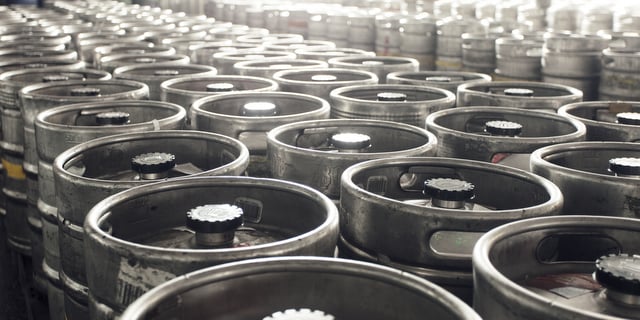
Empty kegs have a tendency to grow legs and disappear. In my experience as CFO for a beer distributor, I can’t tell you how many times the inventory records showed one thing, and the physical count of empties showed another. There were always missing kegs. How many kegs do you own in your brewery? I’m talking about empties and full barrels — barrels that you bought and paid for. If you keep computerized records, the inventory report may tell you there are 1,000 kegs on hand. The big question is: how many do you really have?
In this article, I’ll highlight how much cash is tied up in kegs, and how much money you stand to lose if you don’t have a good system to manage this part of your inventory. Below are ideas you can use in your brewery to gain better control over your kegs. The ideas could also save your income statement from certain death in the form of a big write off of missing kegs.
Best practices to manage keg inventory
- Preach the gospel: empties are Inventory
- Pay attention: Understand where empties get lost
- Use this process to keep track of kegs in your warehouse
- Use this process to keep track of kegs at retail
Empties are inventory
A full size half-barrel costs about $100. If you have 1,000 in inventory, that’s $100,000 worth of stainless steel. A variance of a few percent can be thousands of dollars, and a variance of 15 or 20 percent is tens of thousands. One of the biggest challenges I faced as a CFO was to teach people that empty kegs are inventory. Our folks knew that beer in bottles, cans and kegs was inventory, but they did not view the empty barrel the same way. To them, it was just an empty barrel that we needed to send back to the brewery, MicroStar or Kegspeditor. To me, and to the income statement, that empty barrel was money.
The first step to better management of your keg inventory is to teach this principle to your team: empties are inventory and they need to be treated with the same diligence and oversight as the beer inventory. Pay as much attention to empty keg inventory as you do with your raw materials. Hops, malt and mother cartons are important, and so are the empty kegs.
Understand where empties get lost
The old saying goes that inventory has feet, and it will walk away if you don’t keep a close eye on it. The same is true for your empties — your kegs have legs. Empty kegs are stored all over the place: in the back parking lot, tucked into corners of the warehouse, and scattered across hundreds of retail accounts in the market. It’s easy to lose track, and take your eyes off the prize.
Where do all the kegs go?
- Theft: Retail accounts leave empties outside. Easy for passersby to snag them.
- Borderline theft: Other distributors pick them up and take them home (by accident, or otherwise).
- Kegs bought by customers at an off-premise account and never returned. They make for a nice coffee table in college dorm rooms.
With kegs in so many different places it can be difficult to properly account for them all. Inevitably, many disappear, never to return. Pay attention to where kegs tend to get lost and put in a system to make sure they get found.





Leave a Reply
You must be logged in to post a comment.